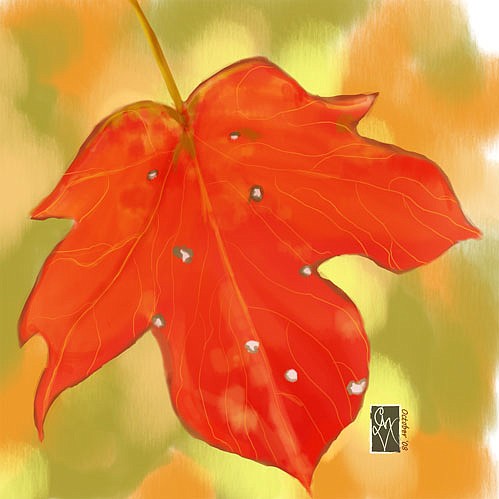Wednesday, October 29, 2008
With the arrival of fall, I am ready to spend more time outside after months of avoiding the summer heat. Mississippi doesn't have quite the autumn splendor of my home state of Virginia, but my husband is slowly trying to add more fall color to our yard with trees such as blackgum, red maple and silverbell. He has even planted a few baby apple trees for a fall harvest a few years down the road. Fortunately, fall is the best time for major landscaping projects, such as planting trees.
Grass
Growing a traditional green lawn uses a great deal of water and pesticides. Most people don't realize that irrigating the average American lawn uses 238 gallons of drinkable water each day. Most also don't realize that residential pesticide use is 20 times higher on average than what is used by non-organic farmers. Pesticide usage, incidentally, boosts the childhood cancer rate four times higher than the rate of cancer in children growing up in pesticide-free homes.
If you must water your lawn, do so early in the day to avoid losing water through evaporation. Make sure that your sprinkler is positioned so that it is not bathing your driveway or sidewalk. Or see what happens if you don't water at all, and just let your lawn go dormant if there is a drought. It saves you from mowing, anyway. Meanwhile, get a little exercise by using a manual push-mower for lawn maintenance when you do need to trim the grass or a rake when you want to clear the leaves.
Other plants
Better yet, get rid of as much of your grass as possible, and replace it with low-maintenance trees and native plants. Plant shrubs on your yard's slopes to prevent erosion and runoff. Plant deciduous trees on the south side of your house to eventually reduce your home energy costs by up to 20 percent when the trees are mature. Keep mosquitoes away with basil; ants and fleas away with rue; and many other pests away with marigolds. Ask a friend for some free cuttings of native plants from their garden.
Collect water in a rain barrel to reduce your water bill as you establish your new plants. Mulch your plants to help them retain moisture, and give them compost to keep them nourished.
Consider starting a vegetable garden in your yard to grow some of your own produce and avoid rising food costs. You can start small with some tomato plants and your favorite herbs, and expand a little each year. Gardening in pots or raised beds is often easier than trying to till a garden directly in our clay-rich soil. You can also start or get involved in a community garden, and share gardening tips and fresh produce with your neighbors.
Wildlife
Look for plants that encourage bees, butterflies and other helpful insects to visit your yard. Provide a bird feeder and perhaps a water feature for migrating birds. Create cover for wildlife by planting shrubs or starting a brush pile in a corner of your yard. Feed worms with a compost pile that combines organic kitchen scraps (such as fruit and vegetable peels and cores, tea bags, and moldy bread) with lawn waste (such as grass clippings, raked leaves, or small sticks).
As you make your yard a little greener, remind yourself that bright green lawns are an ideal we borrowed from mother England, land of frequent drizzle. The traditional lawn is not suitable for most climates in America. Instead, let's embrace the beautiful plants of our area that require much less maintenance. And let's take our Frisbee games to the park.

Comments
Use the comment form below to begin a discussion about this content.
Sign in to comment
Or login with:
OpenID